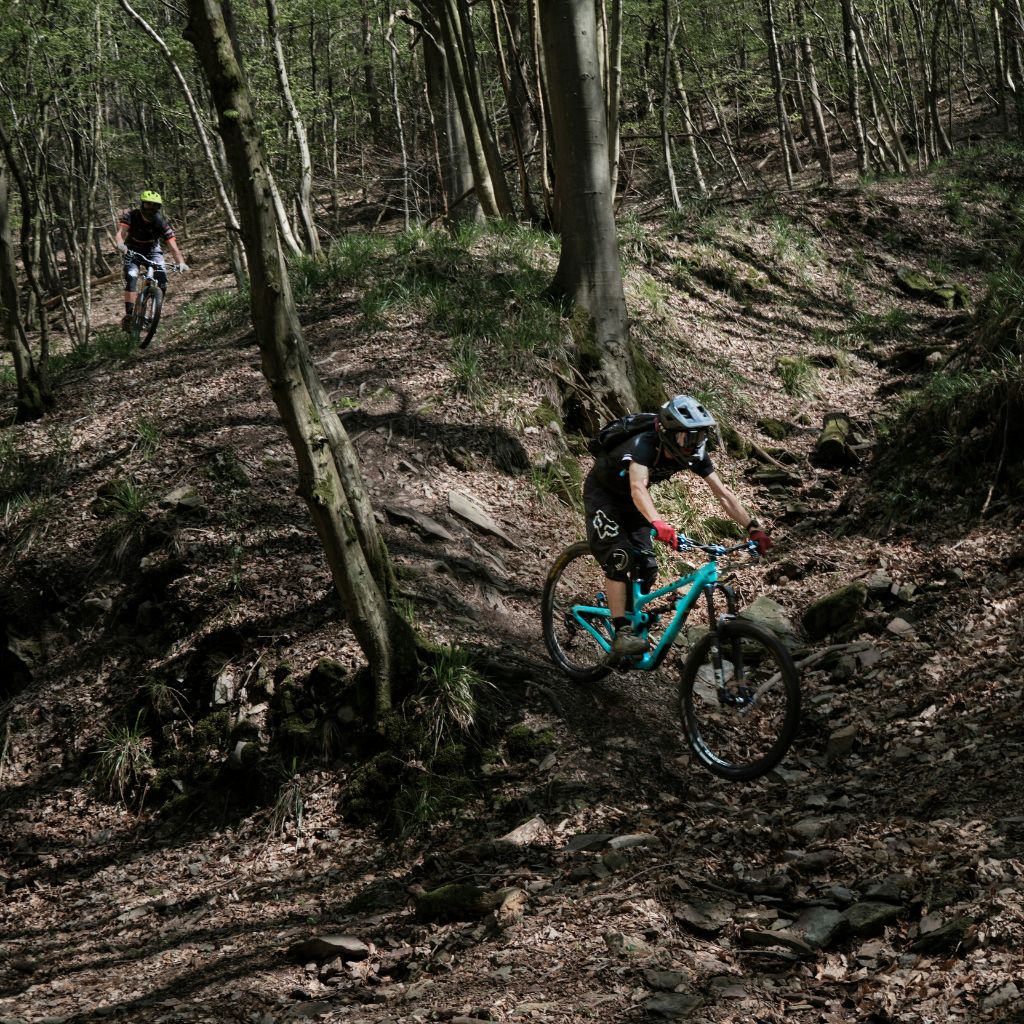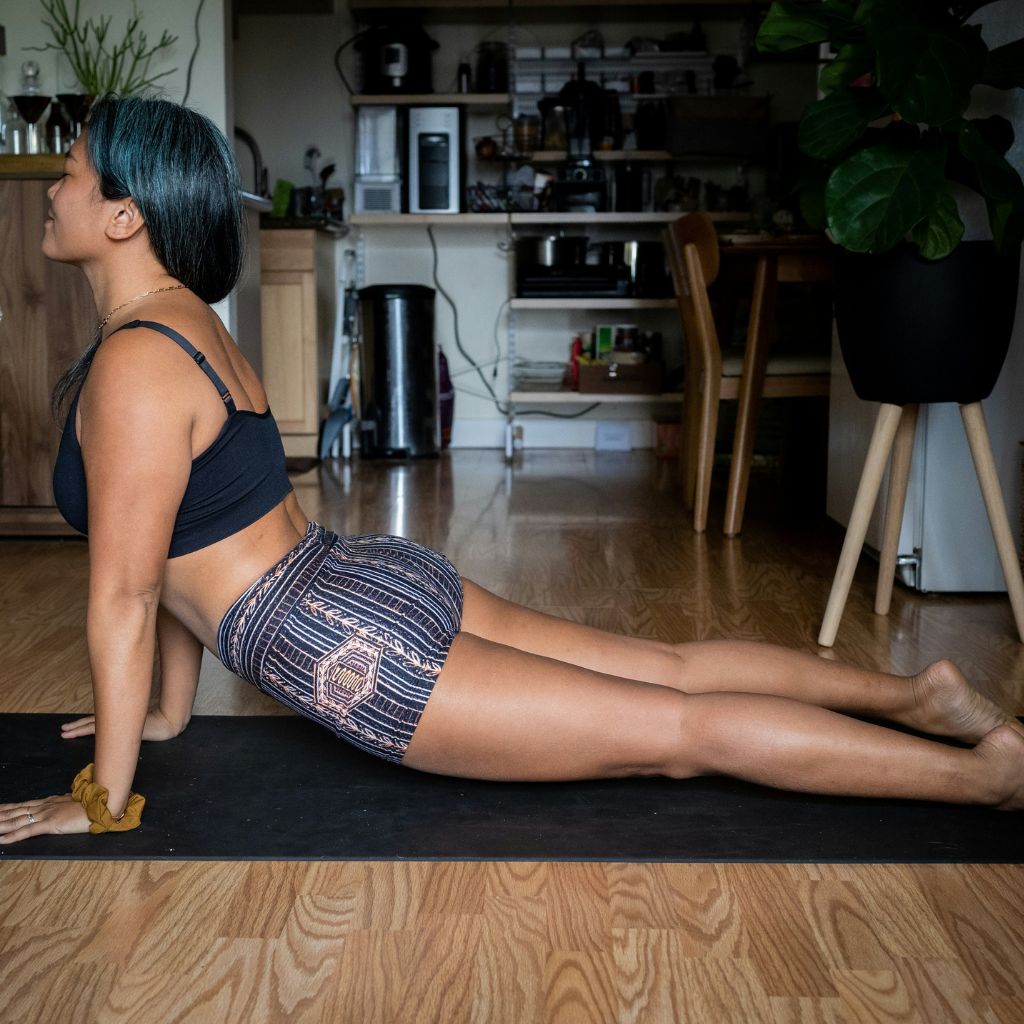Mountain biking, a sport synonymous with adventure and endurance, also brings into play a significant physical aspect, particularly concerning back health.
Picture yourself maneuvering through rugged trails, your body constantly adjusting to maintain balance and control. This dynamic nature of mountain biking is what places varying demands on your back.
In the cycling position, especially during mountain biking, the spine is inclined to lean forward, placing a continuous load on the lumbar region (lower back).
This is exacerbated on rough terrains where shocks from bumps and dips are absorbed not just by the bike’s suspension but also by the rider’s back muscles. While this can lead to stress and strain, it’s not a one-dimensional impact.
On the flip side, mountain biking can be a boon for strengthening your core muscles.
These muscles play a pivotal role in stabilizing and supporting the spine. Regular biking can enhance core strength, which in turn provides better support to the back, potentially reducing the risk of back pain and improving overall posture.
The critical aspect is to strike a balance – leveraging the strengthening benefits of the sport while being mindful of the stress it can impose on your back.

Correct Posture and Bike Fit
Venturing into the technicalities, the importance of correct posture and bike fit is paramount in safeguarding your back.
A bike that isn’t tailored to your physique can lead to an uncomfortable and potentially harmful riding posture.
Ensuring the right fit involves several adjustments: the saddle height should allow a slight bend in the knee at the pedal’s lowest point (though obviously when descending we’ll often have our saddles lowered), the reach to the handlebars should be comfortable, without overextending, and the handlebar height should encourage a natural spine alignment.
Beyond the mechanics of the bike, your posture while riding is equally crucial.
A common error is the tendency to hunch forward, rounding the lower back excessively. This posture, often adopted for aerodynamics when putting in the miles while peddling, can put undue stress on the lumbar spine and surrounding muscles.
The ideal posture involves a neutral spine with a slight natural curve, engaging the core to support the upper body. This not only lessens the strain on the back but also facilitates more efficient pedaling and control over the bike.

Training and Conditioning
To further mitigate back issues and enhance your mountain biking experience, proper training and conditioning are key.
Core exercises like planks, bridges, and rotational movements fortify the muscles surrounding your spine. This core strength is not just about building muscle; it’s about creating a robust support system for your spine, thus diminishing the load it bears during biking.
General physical conditioning extends beyond the core.
Cardiovascular fitness ensures you have the endurance for long rides, while overall strength training, focusing on the legs, arms, and back, prepares your body for the physical demands of mountain biking.
Flexibility plays a critical role too (something I am seeming to get worse and worse at as I get older argh!)
Tightness in muscles, particularly the hamstrings and hip flexors, can alter the alignment of the pelvis and consequently strain the lower back. Regular stretching, yoga, or Pilates can alleviate this tightness, promoting better muscle balance and reducing the risk of back pain.

Listening to Your Body
The final, and perhaps most crucial aspect, is attuning to your body’s signals. Back pain during or after riding is a telltale sign that something needs attention.
It could be a sign of poor posture, an improperly fitted bike, a deficiency in core strength, or even an underlying back condition. Addressing these issues early on can prevent them from escalating into more serious injuries.
Rest and recovery are integral to any physical activity, and mountain biking is no exception. The sport’s high intensity necessitates adequate recovery time to prevent overuse injuries. Ignoring the need for rest can lead to persistent back issues.
For those with a history of back problems, or if you’re experiencing persistent back pain, seeking advice from a healthcare professional, such as a physical therapist or a sports medicine specialist, is advisable. They can provide targeted exercises and guidance tailored to your specific back health needs.
The bottom line…
So really, mountain biking’s impact on your back is multifaceted.
While it poses certain risks due to the physical strain and posture demands, it also offers significant benefits in terms of strengthening core muscles and improving overall back health.
The key lies in balancing these aspects – ensuring proper bike fit, maintaining correct posture, engaging in targeted training and conditioning, and listening to your body’s cues. By doing so, you can enjoy decades of mountain biking while looking after your back’s health and well-being.
Remember, each rider’s journey is unique, so finding what works best for your back is essential in your mountain biking adventure. Keep shredding – see you on the trail!

